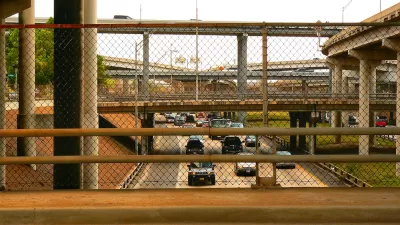A curious discrepancy between two major congestion reports using the same data: There is a profound and unexplained discrepancy between the travel trends in the latest Urban Mobility Scorecard report and the data provided by Inrix.
The Texas Transportation Institute's Urban Mobility Scorecard claims that congestion increased by about 4.7 percent between 2010 and 2014. However, INRIX, which provides the source data used for the Scorecard, actually reported that U.S. traffic congestion declined 29 percent from 2010 to 2014. The new TTI report neither acknowledges nor explains the discrepancy between its tabulation of these data and the one prepared by INRIX.
A new post by Joe Cortright of the City Observatory, "Contradictory Conclusions and Disappearing Data," discusses these discrepancies. Of course, different analyses can produce very different conclusions using the same data, reflecting different analysis assumptions and techniques. Basic academic practices requires researchers to explain their methods in detail, respond to questions and criticisms, and apply peer review, but TTI has so far refused to respond to such requests.
In addition, after the TTI report was released, the link to the monthly INRIX data for 2010 through 2014 was removed from their website. The original INRIX Tableau data has been hosted on a separate public server.
So here's where we currently stand: A separate tabulation of the same data that TTI used for its report concluded that congestion actually declined 29 percent between 2010 and 2014, rather than increasing 4.7 percent as TTI claimed. TTI has never acknowledged this different tabulation of the Inrix data, nor explained why its methodology produces such a different result. The link to the contradictory data has been removed from the Inrix website (although, the data are still available on a public server).
These facts raise important questions about the quality of TTI research and the reliability of the Urban Mobility Scorecard results.
FULL STORY: Contradictory Conclusions and Disappearing Data

Study: Maui’s Plan to Convert Vacation Rentals to Long-Term Housing Could Cause Nearly $1 Billion Economic Loss
The plan would reduce visitor accommodation by 25,% resulting in 1,900 jobs lost.

North Texas Transit Leaders Tout Benefits of TOD for Growing Region
At a summit focused on transit-oriented development, policymakers discussed how North Texas’ expanded light rail system can serve as a tool for economic growth.

Using Old Oil and Gas Wells for Green Energy Storage
Penn State researchers have found that repurposing abandoned oil and gas wells for geothermal-assisted compressed-air energy storage can boost efficiency, reduce environmental risks, and support clean energy and job transitions.

Santa Barbara Could Build Housing on County Land
County supervisors moved forward a proposal to build workforce housing on two county-owned parcels.

San Mateo Formally Opposes Freeway Project
The city council will send a letter to Caltrans urging the agency to reconsider a plan to expand the 101 through the city of San Mateo.

A Bronx Community Fights to Have its Voice Heard
After organizing and giving input for decades, the community around the Kingsbridge Armory might actually see it redeveloped — and they want to continue to have a say in how it goes.
Urban Design for Planners 1: Software Tools
This six-course series explores essential urban design concepts using open source software and equips planners with the tools they need to participate fully in the urban design process.
Planning for Universal Design
Learn the tools for implementing Universal Design in planning regulations.
Ascent Environmental
Borough of Carlisle
Institute for Housing and Urban Development Studies (IHS)
City of Grandview
Harvard GSD Executive Education
Toledo-Lucas County Plan Commissions
Salt Lake City
NYU Wagner Graduate School of Public Service




























